Food and water are not the only things you need to prepare for your survival. If you really want to be prepared, you need to invest in the best gas mask in case, you know, someone starts a war or there’s a chemical attack in your area.
But here’s the problem:
Buying a gas mask isn’t easy. Not a lot of people have a clear idea of what to look for so it’s easy to make mistakes.
If you are one of those people, here’s an in-depth guide you can use to find the best gas mask for you.
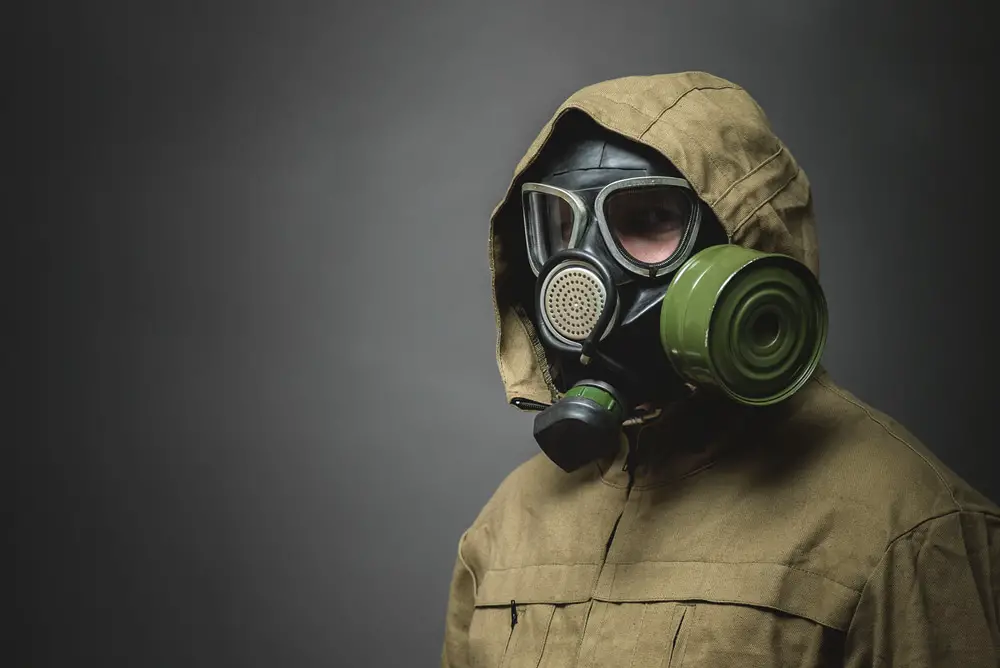
A Brief History
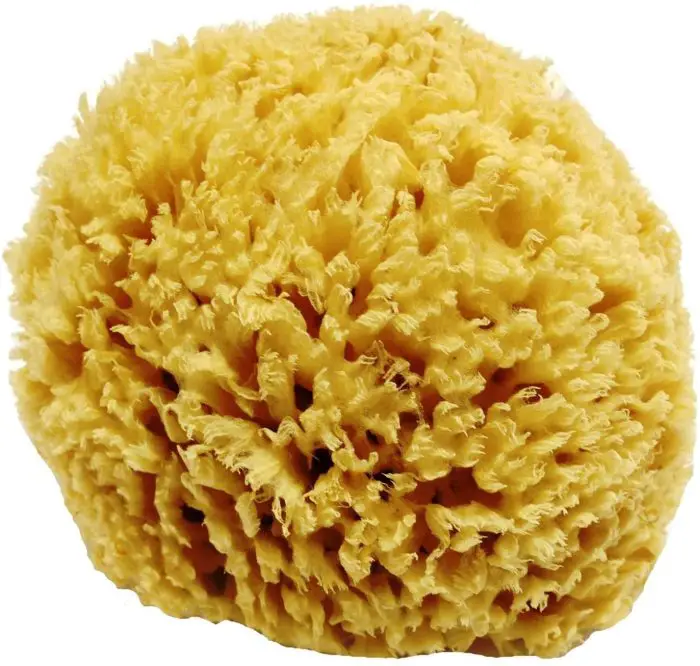
Believe it or not, gas masks aren’t considered a type of modern device. Their history goes back several centuries ago.
History suggests that the ancient Greeks used some form of gas mask back then. In particular, they used sea sponges to filter noxious air and harmful dust.
There was nothing complicated about them. In fact, they were just plain sponges.
In the 9th century, the first well-documented use of gas masks was recorded. It happened in Persia where people who were working on polluted wells wore gas masks to protect themselves.
In over 900 years, there was no update or stories about gas masks. It was only in the late 1700s that they got an upgrade. Jean-François Pilâtre, a French inventor, created the first respirator.
From there, gas masks continued to change and evolve. By 1828, John and Charles Deane created a smoke-protecting apparatus. Designed for firefighters, it worked by pumping air into a helmet, allowing the wearer to enter burning stables and rescue horses and other animals.
In 1847, charcoal was added to gas masks. It’s highly absorbent which means that molecules, ions, and atoms from other substances adhere to its surface. It’s different from absorption where a type of fluid gets dissolved by a liquid or solid.

The most important changes in gas masks probably happened during World War I. There, people used different industrial technology to cause harm to others. That included the use of poisonous gas.
The use of such a method required both sides to create reliable gas masks to protect themselves. And because of such need, gas masks improved dramatically in terms of reliability, quality, and durability.
Believe it or not, these approved gas masks aren’t just needed to survive the end of the world.
It’s one of those things you wouldn’t want to be without in case something happens and you’re unable to breathe because there are chemicals in the air. Obviously, if you can’t breathe, there’s a good chance you could die.
Apart from that, you should also consider having a gas mask for the following reasons:
- To Protect Your Lungs
The chemicals used in chemical warfare don’t just create problems for the skin and eyes. Their actual power is in their ability to stop humans from breathing.
With reliable and approved gas masks, you’ll be able to have respiratory protection. It’ll stop the gasses from reaching your system and causing problems.
Approved gas masks are also helpful when there are wildfires. They can produce huge amounts of smoke and exposure to them can cause a wide range of respiratory issues.
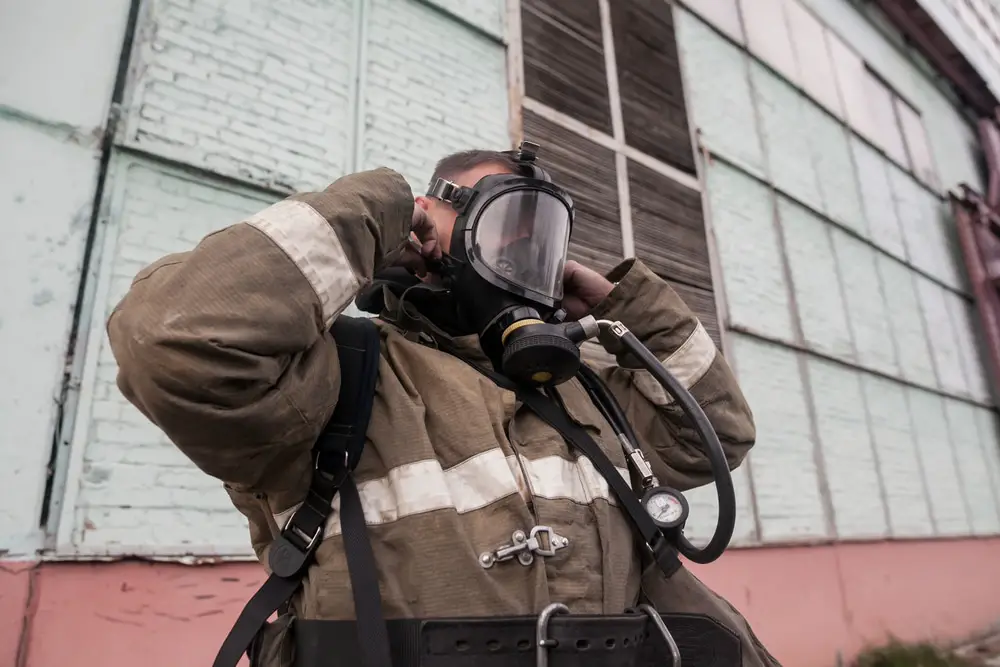
- To Protect Your Eyes
In chemical warfare, your lungs aren’t the only organ that’s at risk. Exposure to harmful chemicals can also leave permanent damages to your eyes.
And when you’re caught in the middle of chemical warfare, you’d want to keep your vision intact. Without the ability to see, you’ll have problems getting yourself to safety.
- To Protect Against Illnesses
In the middle of a pandemic, you’d want to have a gas mask on hand as protective equipment. It can help guard your lungs and eyes by preventing bacteria and other microorganisms from entering your body.
But here’s the thing:
A gas mask can only offer respiratory protection to a certain extent. It has no way of killing viruses.
- To Protect Yourself Against Smoke Inhalation
There’s nothing wrong with focusing and preparing for large-scale disasters. However, if you really want to be prepared, you also have to consider common emergencies like a house fire.
Imagine this:
If you were caught in that kind of emergency, you’d find it easier to escape if you had a gas mask, right? It’ll make it easy for you to breathe as you move to a safer location.
- To Protect Yourself During a Nuclear Fallout
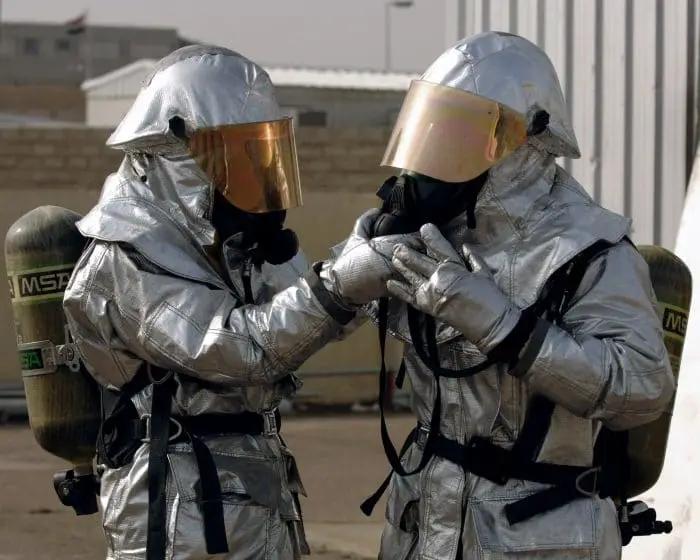
This one’s a bit extreme. However, to be fully prepared, you need to consider all emergencies and that includes a nuclear explosion.
With a gas mask, you’ll be able to avoid breathing in the fallout. It will help keep you safe from the detrimental effects of poisoning.
- To Protect Yourself During Civil Unrest
Peaceful protests are quite common these days. However, no matter how hard protesters try to keep them peaceful, there’s still a good chance that they can turn violent. They may even trigger conflicts with the local authorities which can put your safety at risk.
How Do Gas Masks Work?
In general, approved gas masks offer protection against noxious contaminants. The way they do it can vary but their basic purpose is to filter out harmful particles and substances while letting clean, breathable air in.
Depending on the design, gas masks may also protect the eyes and other vulnerable tissues on the face.
Although gas masks are a big help during warfare and riot control, it’s not always effective.
For one, they are not capable of providing protection against chemical agents that can get into your system through the skin. Examples of these agents include mustard gas and sarin.
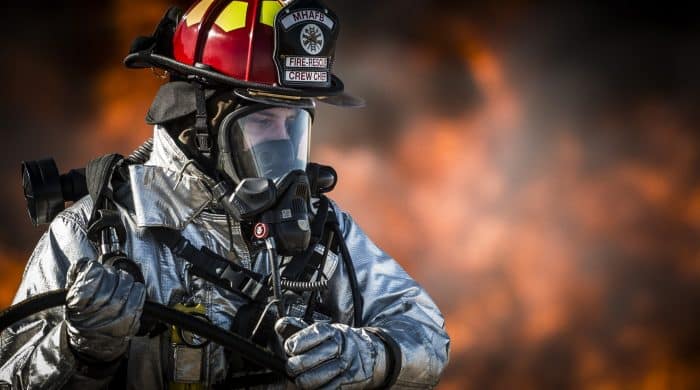
They can’t offer protection in a fire, too. The only thing they can help you with is in filtering out soot and keeping smoke out of your lungs and eyes.
Now, let’s talk about filters.
Air filters that are used with approved gas masks work by using any one or a combination of the three different air purifying techniques:
- Chemical reaction to neutralize chemicals
- Particle filtration
- Chemical absorption

Out of the three air purifying techniques, particle filtration is the simplest. When you place a cloth over your mouth to prevent dust from getting into your lungs, you’re using this technique.
In the event that you have to deal with a potential biological threat, you’ll need a fine particulate filter.
Think about this:
Anthrax bacteria have a minimum size of about one micron.
Considering that, you need a filter that can remove bacteria of that size. Fortunately, the majority of today’s biological particulate filters can remove particle sizes that are as small as 0.3 microns.
There are chemicals that can’t be removed by particle filtration. This includes chemicals that come as vapors and mists.
For these kinds of chemicals, chemical adsorption or absorption is the best technique to use.
For organic chemicals like paint fumes, activated charcoal is the most ideal agent. It works really well at trapping organic chemicals or carbon-based impurities.
For the third technique, consider the gas attacks that happened during World War I. Back then, armies used masks designed with chemicals that are known to neutralize chlorine.
In modern times, you have the option to pick from different filters based on the chemicals you wouldn’t want to be exposed to. The NIOSH or the National Institute for Occupational Safety & Health color code filters for chemicals.
For example, if you want protection against radioactive materials, you’ll need to find a purple or magenta filter. For protection from smoke coming from burning buildings and wildfires, consider getting a filter that works against particulate matter.
Understanding the Parts of A Gas Mask
For you to have a better understanding of approved gas masks, you need to take a good look at their parts. That way, you’ll be able to know why each piece is critical to a mask’s purpose.
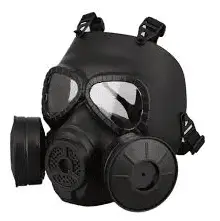 The Face Cover
The Face Cover
Considered the biggest piece of a gas mask, the face cover generally holds all the different pieces together. It’s typically made of silicon rubber.
The said material is highly resistant to high temperatures. Plus, it’s really flexible, too.
Filter Cartridges

Filter cartridges are probably the most essential part of gas masks. Generally made of styrene plastic, they are usually just about 10 centimeters or 4 inches.
For them to filter air, different filters are used. The most common of them is the activated carbon.
The Straps
Gas masks’ straps are typically made of silicon rubber. The material is an excellent choice because it’s highly resistant and stable.

Their main purpose is to keep the mask in place. They can keep it stable even in the event of sudden movement.
Eyepieces
The eyepieces allow wearers to see. They are essentially the lenses of your mask.
In addition to vision, the eyepieces also provide protection from gases, debris, and heat which can be very damaging to the delicate organ.
Usually, eyepieces are made with polycarbonate plastic. This material is waterproof and resistant to high temperatures. They also offer a certain level of shade to minimize flashes.
How to Wear A Gas Mask
Your gas mask won’t be able to protect you if it doesn’t fit properly. In wearing one, you have to remember that you need it to create a vacuum seal with your face.
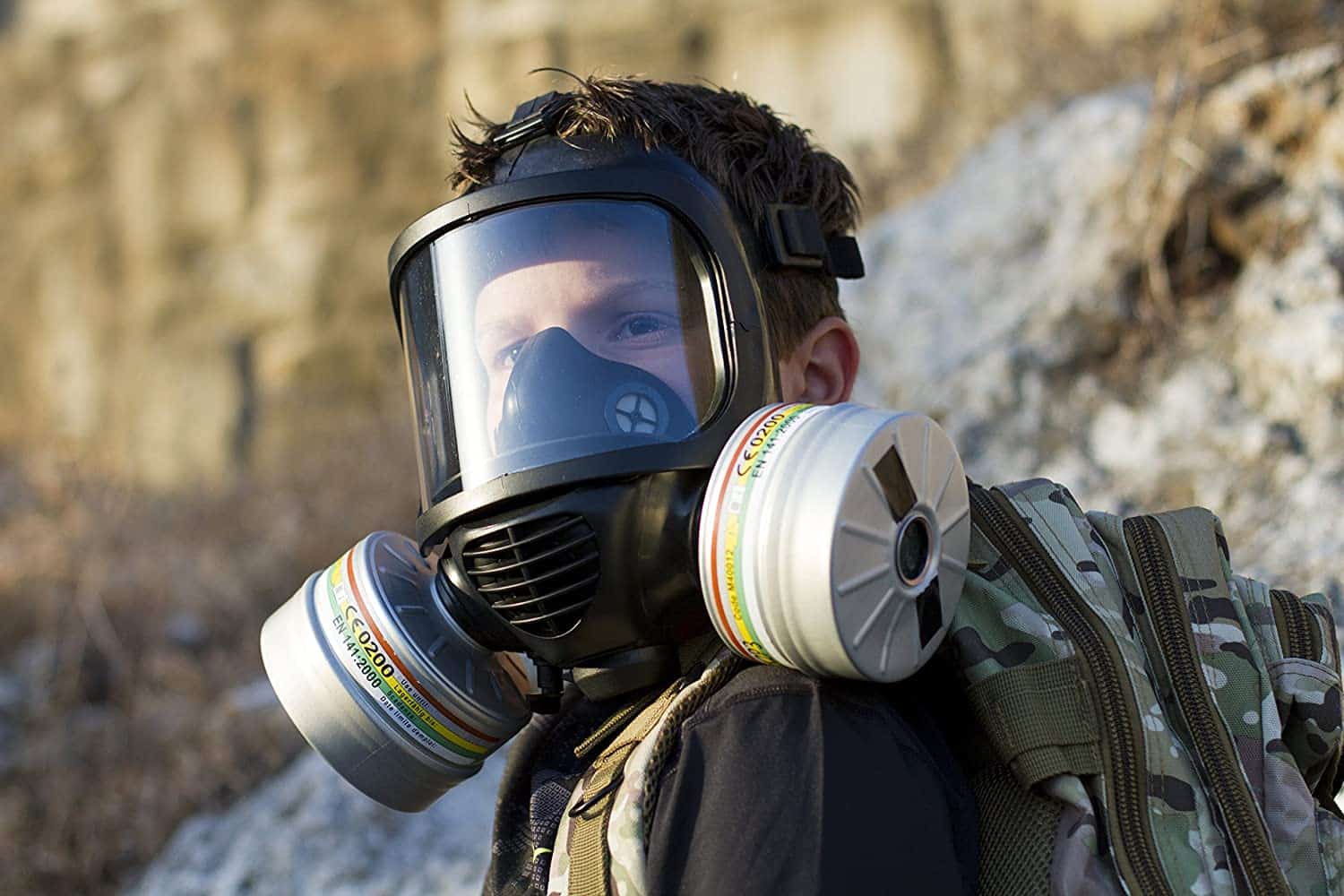
How do you do that?
- Complete loosen the straps and pull them to the front of your maks. By doing this, you’re getting them out of the way.
- Next, put your chin in the chin cup and carefully roll the mask on your face. As you wear it, ensure that your nose is in the mask’s nose cup, too.
- Hold the mask in place and pull the straps to the back of your head.
- Once you’re sure you have a nice fit, you can start tightening each strap. Make sure that the mask is secure before working on the middle and bottom straps.
- With your hands, cover the filters and inhale deep and fast. This is to check the seal of your mask. If you feel that it’s tightening around your face and there’s no air getting inside, then your fit is good. Otherwise, you’ll need to repeat the process until you’re able to create a vacuum seal.
When putting on your mask, you have to remember that if it doesn’t fit properly or if you don’t know the right way to put it on, there’s a good chance that it can’t offer protection. This is why it’s a good idea to practice donning and doffing a couple of times until you get the process right.
Note: Don’t wait for an emergency before trying on putting the mask on and taking it off.
Consider getting several filters, too. When it comes to gas masks, there’s no such thing as too many filters. Be sure to keep a selection of them based on the emergencies you’re preparing for.
Common Mistakes When Buying Gas Masks
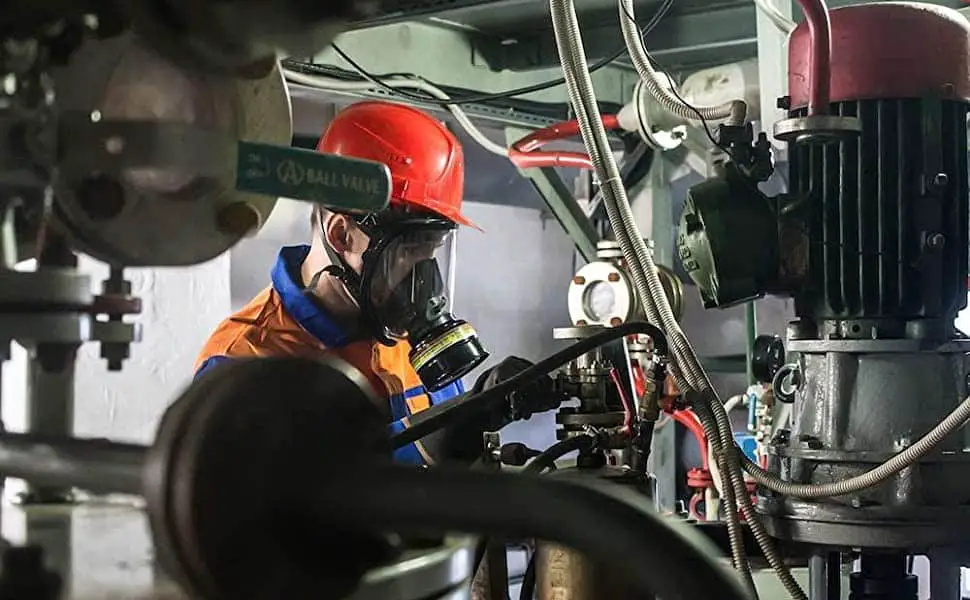
If you’re new to buying gas masks, it’s easy to make mistakes. However, since these masks are critical to your safety and survival, you need to find a way to make sure you get your hands only on the right mask for you.
Below is a list of the common mistakes people make when buying gas masks and how to avoid them:
1. Purchasing Obsolete Masks
Like with any product, the shelf life of gas masks is limited. They deteriorate when they get old, making them ineffective in protecting you.
So how do you spot obsolete masks?
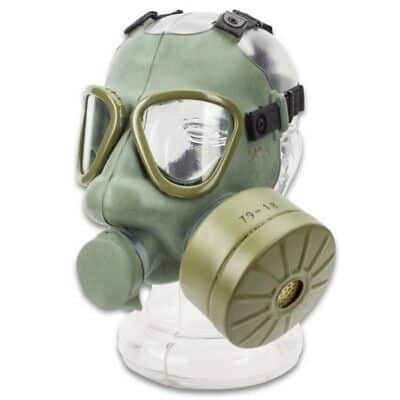
If they are sold at an incredibly low price, there’s a good chance that their quality is questionable. Also, if you see cracking, tears, and changes to its appearance, they probably offer little to no protection.
To give you an idea, take a look at some of the masks you’d find in the surplus condition below:
Serbian M1 Gas Mask
This was widely used by the Iraq army during the Gulf War. Designed after the old M9 American gas mask, you may even find chromium in its filter. Extended exposure to this can increase the likelihood of getting contract cancer.
Canadian C-3 Protective Mask
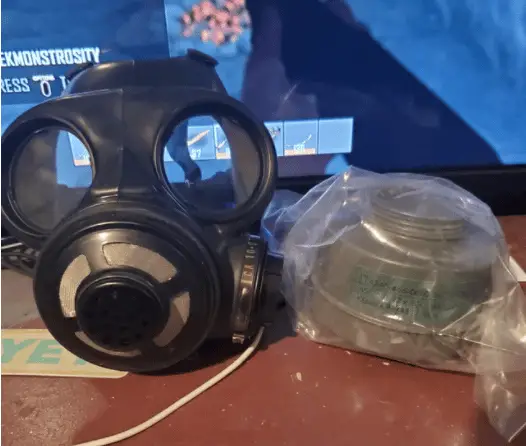
This one is considered the predecessor of the Canadian C-4 mask. It’s been out of production in the last 30 years but you can still find it on several military websites. It comes with 60mm threaded filters which is a huge challenge to find in good and new condition.
GP-5 Gas Mask
This Russian gas mask is totally outdated. In fact, its production ended sometime in 1990.
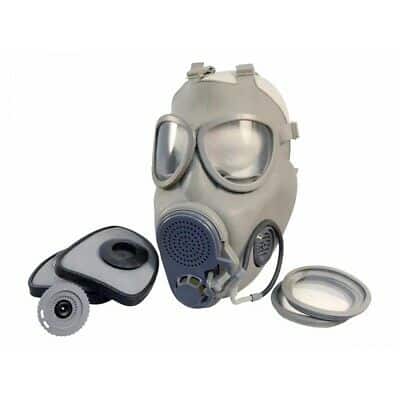
Czech M-10-M Protective Mask
You won’t find this mask useful for CBRN protection. It’s outdated and if you find one, you won’t be sure if it’ll still work.
M17 Gas Mask
This kind of mask was used by the U.S Armed Forces during the Vietnam War. It was eventually replaced by modern models. Although it’s useful for CBRN protection, it wasn’t easy to use. You’d need to take off the mask in order to change its filters.
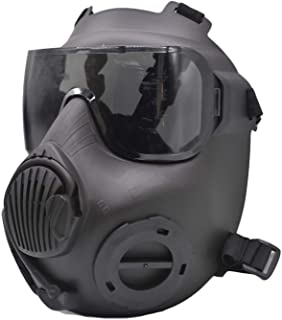
2. Buying Improper Filters
Like obsolete gas masks, expired filters offer zero protection. Even if you change them frequently, they probably won’t be able to ensure your safety from contaminants and other noxious substances.
If you are going to buy a gas mask, make sure that you have enough supply of proper replacement filters. And most importantly, keep them in a place where they won’t be exposed to air, sunlight, and humidity.
3. Buying a Badly Fitted Mask
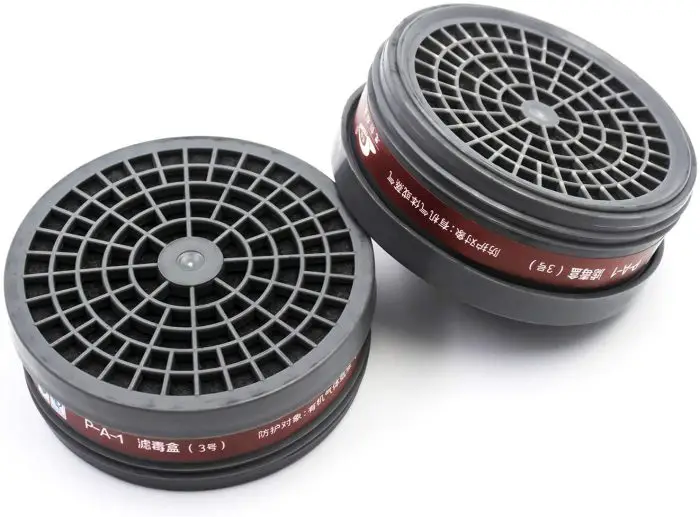
One of the most common reasons for a bad fit is buying an incorrect mask size. You see, there’s no such thing as a one-size-fits-all mask.
In general, masks come in three sizes: small, medium, and large. Picking the right size for you can be quite tricky.
Here’s a rule you can follow:
In finding the right size of gas mask, consider the one that’ll allow you to put it on fast and comfortably.
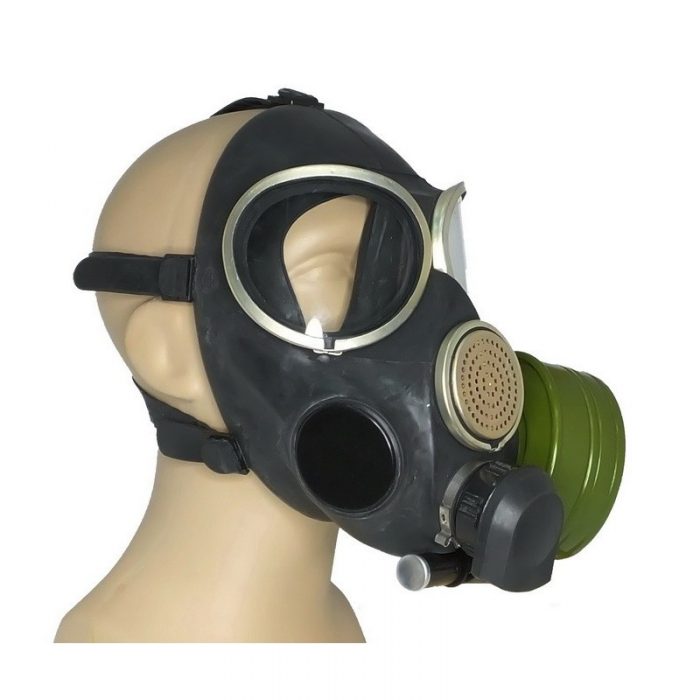
Gas mask sizes aren’t really that different from the sizes of your other headgears such as your hats. You can use them as a reference or you can just refer to the size variations manufacturers offer with the masks they make.
If you’re a big guy, consider buying a large-sized gas mask. This will allow you to put it on your head without any pressing sensation. Apart from that, a big size will also help you see better since it has a wider viewing area.
Medium-sized masks are a bit tricky. They can be bigger or smaller depending on the sizing metrics manufacturers use.
For those who are below the average height and weight, it’s good to go for small-sized gas masks. They shouldn’t be too tight that they press hard against your head, ear, or neck.
Things to Consider When Looking for The Best Gas Masks
Having the right gas mask is critical for survival, particularly when you’re exposed to seriously deadly airborne contaminants. Because of this, you have to be extra careful when buying your mask for the first time. You need to make sure that it offers maximum protection.
With that, here are some of the most important things you should look out for:
1. The Right Fit
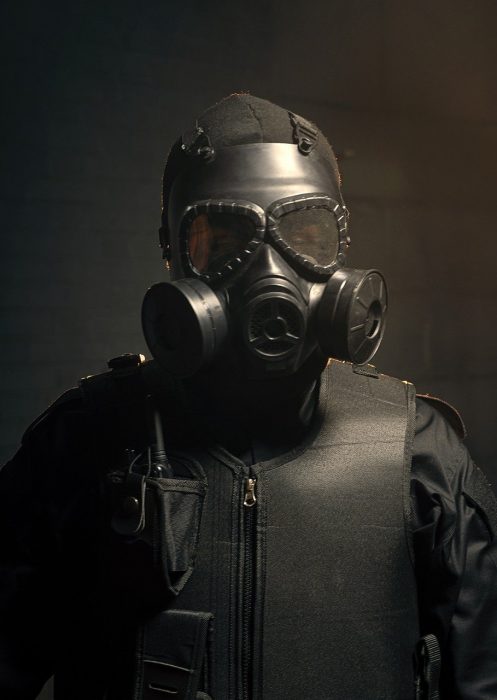
As mentioned earlier, a gas mask will only be able to protect you if it fits securely to your face. One way to ensure a good fit is to buy a mask with adjustable straps. This way, you can loosen or tighten them to get a really airtight fit.
You may also want to look for a gas mask that comes with a comfortable seal. This is helpful when you’re doing physical activities like shooting or running.
There are also masks designed with filter connection points on both sides. These masks are good because they offer more flexibility. They let wearers attach new filters before taking out the used ones.
2. Proper Rating
Find a mask and filter that have a nuclear, biological, and chemical rating. It’s also a good idea to invest in a mast that’s rated for chemical blowing and riot control agents.
Once you have them, make sure to get enough replacement filters, too. Keep them in a cool, dry place that’s away from humidity and sunlight exposure.
3. Up-to-Date Masks
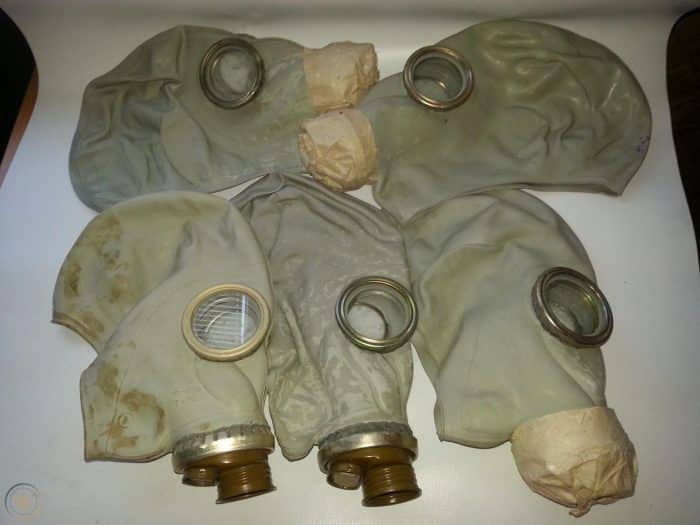
When buying gas masks, you have to be careful about some military surplus models. Some people sell them at a really low price, making them look like a great deal.
Unfortunately, some of them are defective and outdated. They may have been kept in storage for several years so there’s a chance that they’re way over their expiration date.
Buying these masks isn’t safe. Remember, a gas mask’s materials can degrade over time. This can make them permeable to toxic materials and particles.
4. Additional Features
If you wear glasses, it’s a good idea to buy a mask with corrective vision compatibility.
There are also masks with hydration ports that let the wearer connect tubes to a compatible water bladder. This feature is helpful in staying hydrated without the need to remove the mask.
How to Store Gas Masks
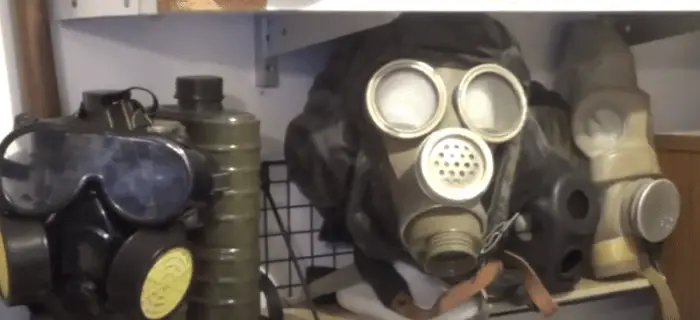
Storage is a big factor for gas mask safety. It’s critical to its shelf life, too. When stored improperly, they tend to deteriorate at a faster rate.
Ideally, you need to keep your mask and filter in a cool, dry place. It should be clean and not exposed to extreme temperatures. It’s also a good idea to store your mask in an air-tight container.
What if you’ve already used your gas mask?
You have about 24 hours to use it before you need to change its filter canister. Take note that if the air is too saturated with particles and chemicals, you shouldn’t wait for 24 hours before replacing it.
How Are Gas Masks Rated?
Government agencies set up rating systems to make sure that gas mask manufacturers are able to keep comply with the standards. The most important ratings you need to know are the following:
CE
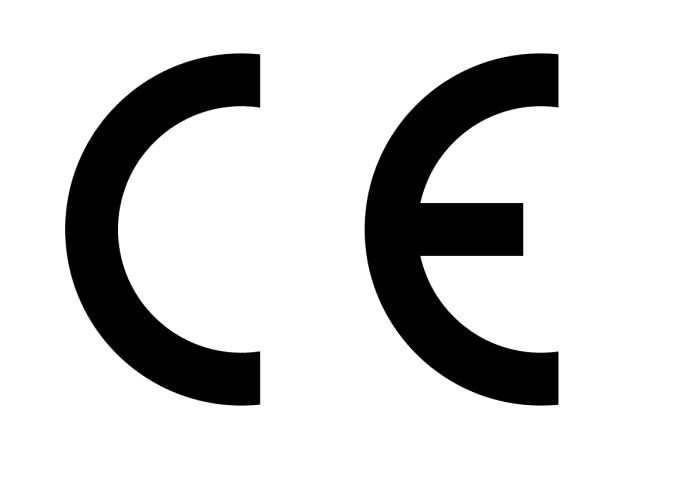
This symbol stands for Conformité Européenne (European Conformity). Every product in the EEA or European Economic Area must have this mark.
This indicates that a certain product meets all environmental, health, and safety protection requirements.
EN 136:1998
Masks marked with this meet the requirements that allow it to be used as a part of respiratory protective devices in systems with negative pressure.
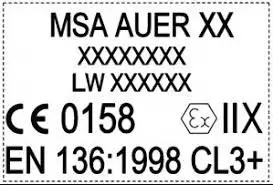
NIOSH

As mentioned, the NIOSH or National Institute for Occupational Safety and Health sets the standards for gas masks for US professionals. Having the approval means that masks have met the standards for protection against CBRN agents and other contaminants you may be exposed to in the field.
Gas Masks vs Respirators: How Are They Different?
Gas masks and respirators are basically not the same things.
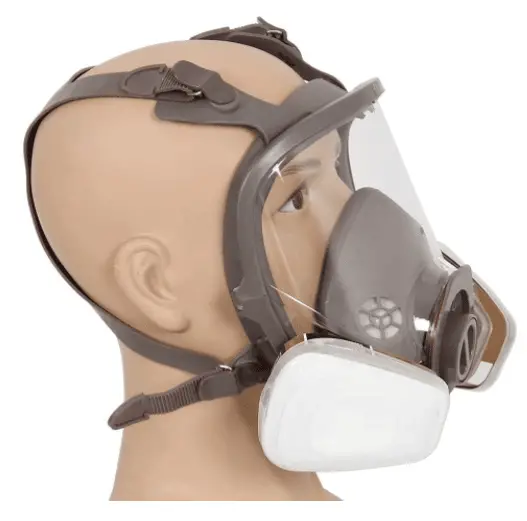
Gas masks are considered protective masks. They cover a person’s face and protect it against hazardous and poisonous chemicals and gases.
They usually use activated carbon as their main filtering technology. Although it’s effective, its use is quite limited as it can only remove certain chemicals.
And here’s an important thing to remember:
Once the charcoal is full, it has this tendency to release its captured chemicals.
With this, it’s safe to say that gas masks can only be effective if the correct filter or cartridge is used. Plus, they require frequent replacements to remain effective.
Respirators, on the other hand, are particularly designed to filter out particles in the air as you breathe. Basically, it’s effective in dealing with just particles and not vapors, gases, and chemicals.
There are two main types of respirators:
Air-Purifying Respirators
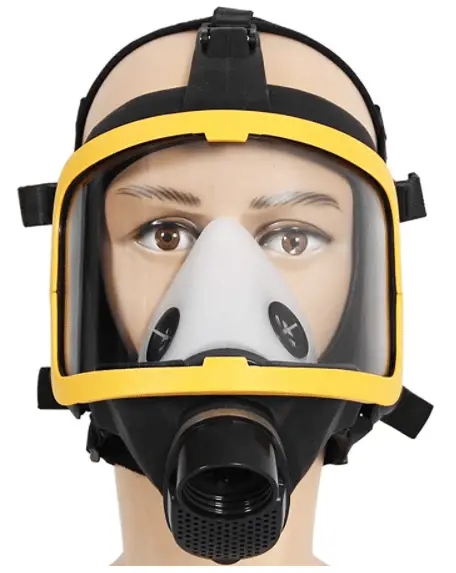
These respirators offer protection by cleaning and filtering contaminants from the air. One of its common examples is the particulate respirator.
This kind is inexpensive since it’s simple. Its main purpose is to protect you from airborne particles like a surgical face mask.
Another good example is the full-face gas mask respirator. This one uses a filter cartridge to filter chemical gases and particulates in the air. As you inhale, the filter cleans the air that goes in.
Atmosphere-Supplying Respirators
They have a separate source of uncontaminated air which they supply to the wearer.
Its most common example is the SCBA or the self-contained breathing apparatus. It has its own supply of compressed clean air so there’s no need to use filters.
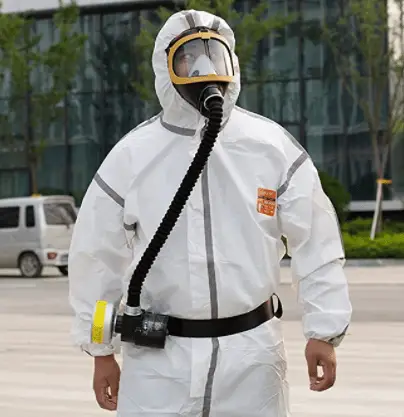
Another one is the air-supplied respirator which utilizes an airline hose to provide clean air. Usually, it’s used by workers who need to work in a dangerous location for an extended period of time.
Now, which one do you need?
The answer to that question will depend on you and your purpose in getting a gas mask.
Choose based on your location and exposure. You should also pick based on your appearance and style.
For example, if you have a beard, you may want to get a hood-style gas mask. With it, you won’t have to shave to get an effective seal.
Where to Buy A Gas Mask
There are a couple of places you can buy good-quality civilian gas masks. Two of the most popular ones are eBay and Amazon.
However, if you do a bit more research, you’ll be able to find more shops that sell a wide variety of gas masks. You can even find some of them in your area.
Before you buy gas masks, you need to know the exact model you need. You can determine this by identifying your purpose.
This extra step is useful when buying gas masks online. With so many varieties, you may end up feeling overwhelmed and confused.
Understanding Gas Mask Filters
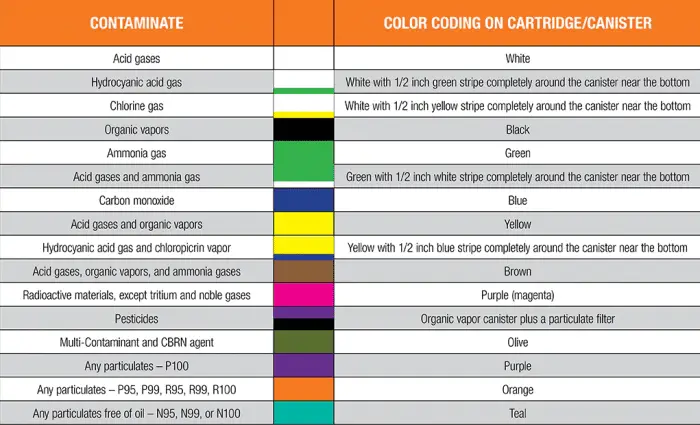
Respiratory filters are marked with a standard color coding. This is widely used in Europe as required by the EN 14387 standard.
With color codes, you should be able to recognize what kind of protection a certain filter provides.
For example, a filter marked with “K” and a green color code offers protection against organic ammonia derivatives. An ABEK filter that’s color-coded with brown-grey-yellow-green, meanwhile, offers protection against vapors and gases of both organic and inorganic compounds. It can also protect you from hydrogen chloride, sulfur dioxide, and organic ammonia derivatives.
A gas mask filter’s shelf life can range anywhere between 5 to 10 years. However, high-end models can last longer. With proper storage, they can last for 25 years or even longer.
The 10 Best Gas Masks
1. MIRA Safety CM-7M Military Grade Gas Mask
MIRA Safety CM-7M Military Grade Gas Mask offers protection against chemical gases, nuclear fallout, radiological agents, biological threats, and others.
The CM-7M Military Grade Gas Mask meets the EN 148-1 and EN 136 standards. It’s been developed together with Czech Army specialists and designed to be compatible with a huge selection of optics used for advanced tactical capability.
Available in three different sizes, this MIRA mask can fit any user. It’s also designed for comfortable all-day use with its hypoallergenic construction. This feature minimizes the carbon dioxide content in the mask while regulating the flow of inhaled air, reducing fogging in the process.
One of the best things about this gas mask is the drinking system it comes with. It enables the wearer to drink and stay hydrated even in contaminated areas. With proper storage, this mask can last for 20 years from when it was produced.
Take note that the MIRA Safety CM-7M is somehow similar to the CM-6M.
2. MIRA Safety CM-7M Military Grade
If you are looking for optimal comfort, Honeywell North 7600 won’t disappoint. You can wear this for hours without worrying about feeling exhausted after.
It offers full-face protection so that you can work without compromising your health. It has this dual flange silicone seal that ensures the perfect vacuum fit. The mask does a great job of keeping harmful gases away from your face.
Plus, it has a wide field view. It’s a nice feature to have if tasks you need to get done while wearing a mask.
Its lens is made with hard-coated polycarbonate which meets the standards of the ANSI. This means that it’s highly resistant to strong impacts.
The only thing you may not like about this mask is that it doesn’t come with filters and cartridges. You’ll need to buy them separately.
3. Muhubaih Full-Face Large Gas Mask
A lot of people use this gas mask for a variety of reasons. Some use it for cleaning out parts of their home while others use it for masonry work.
The mask comes with a large field that doesn’t fog up like your ordinary masks. It also has a silicone face seal that ensures two things- comfort and great fit.
Considering its price, Muhubaih Full-Face Gas Mask is one of your affordable options in the market. However, despite its low cost, its quality isn’t poor.
Designed with a 4-point harness system, the mask is made with a thermoplastic elastomer. This material is great in terms of flexibility and durability.
4. SGE 1 Gas Mask/Respirator 400/3
Mestel Safety is a well-known company for producing masks of good quality just like its SGE 400.
The mask is packed with a lot of high-quality features. For one, it’s a full-face nuclear biological chemical (NBC) protection gas mask. It offers a high level of protection against high impacts and harmful chemical agents.
It’s quite sturdy. In fact, compared with most options in the market today, this one will last longer.
The mask has a scratch-proof lens, adding to its durability and functionality. It also offers excellent ventilation without sacrificing fit and face seal. The SGE 400 has an anti-mist system, too.
Although this gas mask has gained immense appreciation from its users, you should take note that it’s not certified or approved. If you are someone who strongly prefers buying certified masks, you would have to move on and check the other masks on this list.
5. MIRA Safety CM-7M Military Grade
This particular mask is designed to minimize or prevent fogging, thanks to its nose cup. It also has a large field of vision that’s clear of any obstructions. Its polycarbonate lens is also coated with a scratch-proof film to make sure that your vision is always clear.
Even when worn for a long time, this mask won’t feel uncomfortable. It has a silicone finish on its sides.
And for fit, its five head strap design is something you’d like. It keeps the mask in place. You won’t have a hard time adjusting it, too.
One downside of this mask is the space for eyeglasses. You may have a hard time wearing it with your glasses on.
6. MIRA Safety CM-7M Military Grade
Lightweight and comfortable to use, this mask from 3M is mostly made of silicone. It’s quite durable and sturdy so you can expect it to last a long time without dealing with a lot of damages.
The lens offers a clear and wide view. Plus, the shape of the mask enhances your peripheral vision even when wearing it.
There are also has spaces for air filters on each side. This allows you to swap out filters whenever you need to and without having to replace the entire mask.
Take note that the 3M Full Facepiece Reusable Respirator 6700 is a bit stiff. For some people, such stiffness is uncomfortable when they have to wear the mask for a long time. And because it’s not flexible, you may have a hard time wearing it with your glasses.
The mask is ideal to use when you’re handling acids, paint, or chemicals. It’s also recommended to be used in areas where you’re likely to be exposed to toxic fumes.
When it comes to cost, the mask is a bit pricey. It doesn’t come with filters which means that you’ll need to buy them separately.
7. MIRA Safety CM-7M Military Grade
Made with silicone material, this mask is easy soft, and durable. It’s easy to clean, too.
It’s designed to provide great protection from chemical threats and tear gas. It also gives protection against viruses in the air to some degree.
The mask has a domed shape lens. It’s impact-resistant to ensure that your eyes remain protected no matter what.
It’s easy to wear, too. With a silicone headband, you won’t have a hard time getting a secure fit.
One of the unique features of this gas mask is its transmission device. It makes communication easier and clearer.
8. MIRA Safety CM-7M Military Grade
This particular gas mask is of premium quality. It’s designed for rugged use.
The mask comes with a breathable head pad for comfort. Additionally, it also has a secure silicone strap system for easy donning and proper fit.
When you get this model, you’ll receive (nuclear biological chemical) NBC-77 SOF Cartridges. They are quite effective in removing airborne particles.
Plus, the mask also comes with a water canteen and a drinking port. These features make the mask an excellent choice when it comes to survival.
9. NASUM 8200 Face Cover Gas Mask
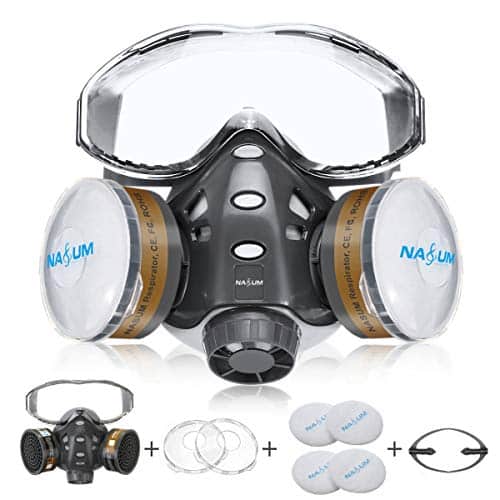
If you’re looking for an affordable option, you can’t go wrong with NASUM 8200 Face Cover Gas Mask.
This particular mask promises comfort and a proper seal. Its sealing edge is made of silicone mixture material, allowing the mask to fit your face really well. Plus, its soft texture makes it comfortable to use for hours.
NASUM 8200 comes with a strap belt that works perfectly with most head sizes. This allows for tight yet comfortable wearing.
And unlike most masks, this one comes with 2 pairs of filter cotton. Since you won’t have to buy them separately, you’ll be able to save money.
Another thing to love about this mask is its high airflow design. This allows for excellent ventilation. Plus, there’s also a communication port.
The gas mask comes with a tough polycarbonate lens. With it, you’ll get a wide field of view.
10.MIRA Safety CM-7M Military Grade
Made with non-toxic materials, this gas mask features a large lens for excellent visibility. With a head belt type design, it ensures tight but comfortable wear.
The mask is designed with reasonable airflow. This minimizes fogging and ensures clear sight all the time.
Communication won’t be a problem with this mask, too. It has a sound device that makes sound transmission clear.
When you purchase this mask, you’ll get 2 activated carbon air filters. This makes the mask quite effective in dealing with organic gases and vapors.
Frequently Asked Questions
How Long Can A Gas Mask Protect You Once You Have It On?
Your masks’ filter cartridge won’t last for a long time. With that being said, how long your mask can protect you will depend on your filter’s capacity. The concentration of contaminants in the air, as well as different environmental conditions, can make it less effective over time, too. You’d know when it’s time to replace your filter once breathing becomes difficult.
Can A Gas Mask Help You Breathe When There’s Not Enough Oxygen Around?
The answer is NO. A gas mask only helps filter contaminants and particles in the air. They don’t provide oxygen unless you have an SCBA system. Without enough oxygen, you may suffocate.
Are Gas Masks For Everyone?
Technically, the answer is yes. However, some people may have a hard time breathing with a gas mask on. This commonly happens with people diagnosed with breathing problems and those who have existing lung diseases.

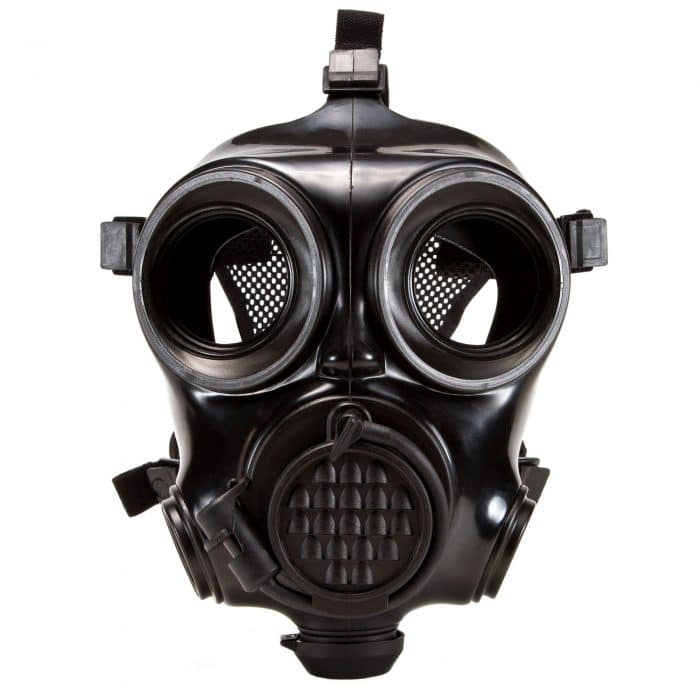
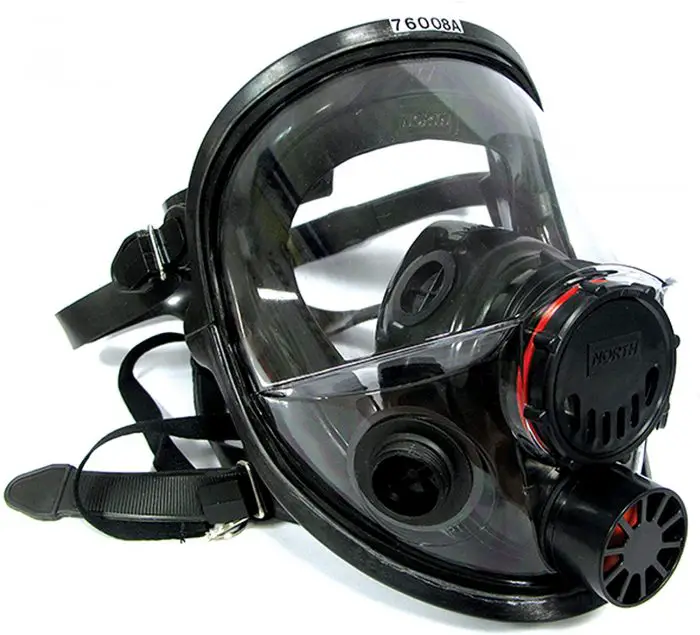
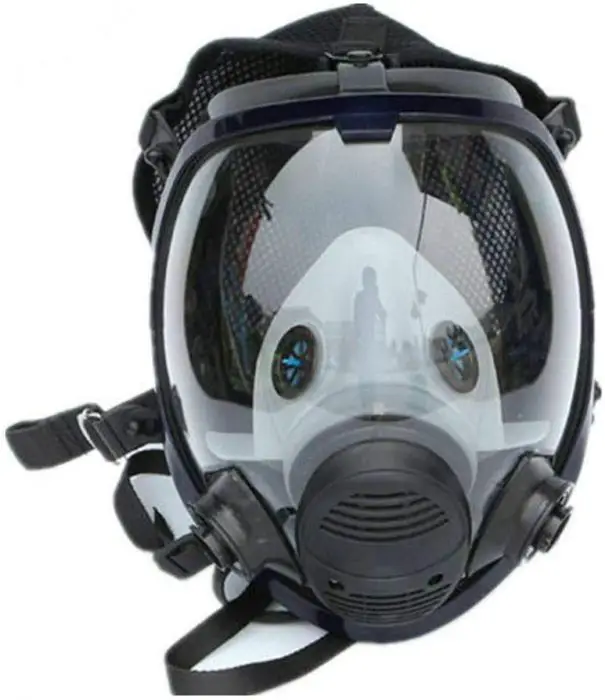
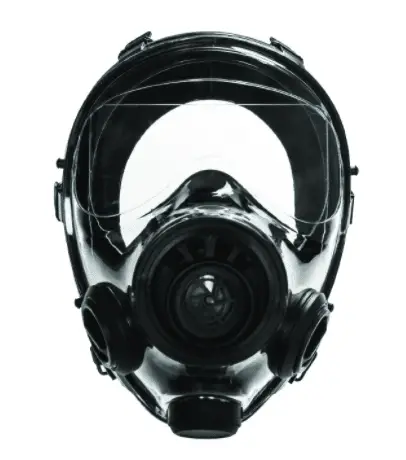
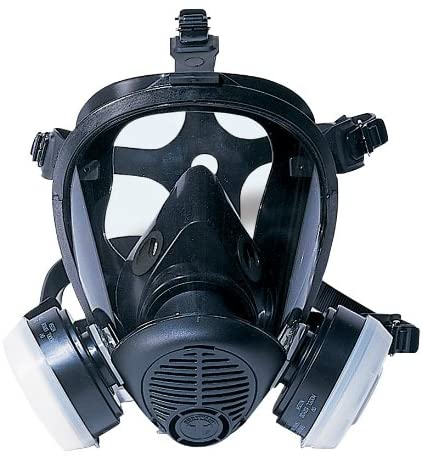
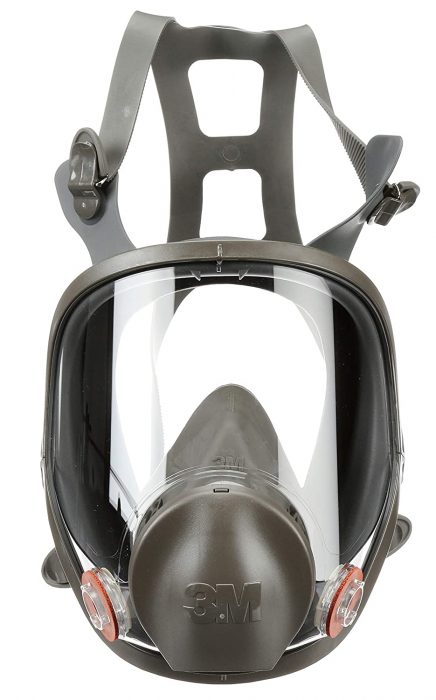
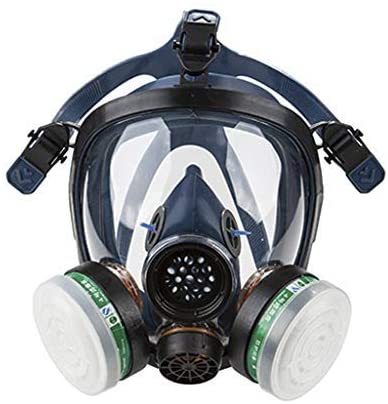
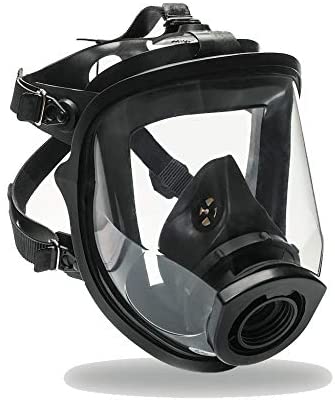
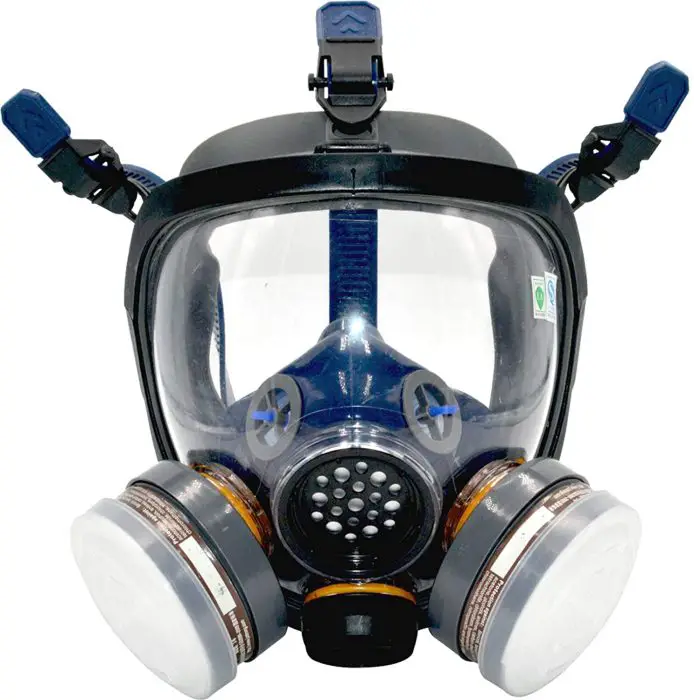
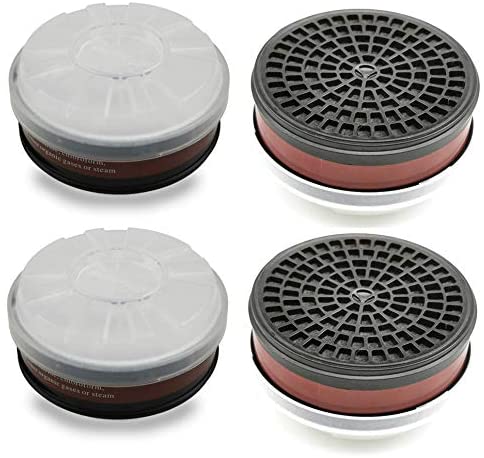
Almost all of the headers of the 10 gas masks you listed say MIRA CM-7M instead of saying what the actual type of gas mask is. Appreciate the article! Would like more info about filters if possible.